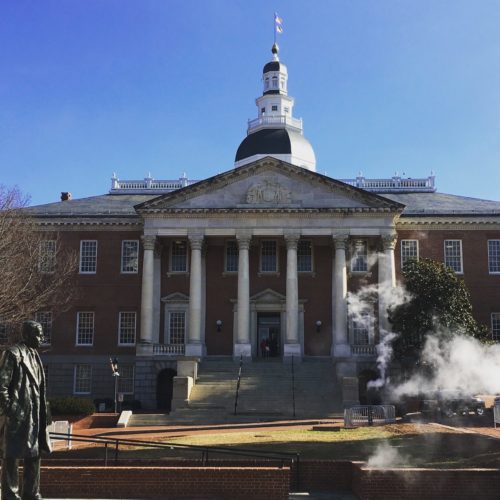Focusing on jobs and equity, Ithaca, New York aims to decarbonize every building
Here are some key points of the city’s plan:
• Ithaca aims to electrify all 6,000 of its buildings by 2030, as part of a citywide goal to reach carbon neutrality.
• Half of the benefits from a clean energy economy will be redirected to disadvantaged communities.
• Officials are creating a “green jobs corridor” to attract workers from neighboring cities with high levels of unemployment or underemployment.
• The city has already raised $100 million in private capital, and is using financial innovation to minimize risk and create zero liability for the city.

When Luis Aguirre-Torres explains how Ithaca, New York is working to become the first U.S. city to decarbonize all of its buildings in less than ten years, he describes a far-reaching effort that focuses on economic development as much as addressing climate change. He admits that it is ambitious, but officials have a vision for how to get there.
“When somebody tells you that you need to fully decarbonize a city in 10 years, [it’s] kind of crazy — but when they tell you it’s eight years, it’s even crazier. But you know, challenge accepted, and here we are,” said Aguirre-Torres, Ithaca’s director of sustainability, in a presentation to CSG East members on February 25.
Ithaca has a citywide 2030 carbon-neutrality goal that is enshrined in its Green New Deal, which the city’s Common Council unanimously approved in 2019 – although Aguirre-Torres explained that the COVID-19 pandemic set back the planning effort by a couple of years. As a first step, the resolution called for the city to get all of its electricity from renewables by 2025, and cut emissions from the city vehicle fleet 50 percent by then. Then last November, the city voted to electrify all 6,000 of its buildings.
“So, no small task,” said Aguirre-Torres, who has a doctorate in electrical and electronic engineering from University College London, and spent more than a decade providing technical assistance for the development of climate change legislation, as well as technological and financial solutions for climate and climate justice projects in Latin America, sponsored by the U.S. Agency for International Development, the U.S. State Department, the UN Industrial Development Organization, and the IFC-World Bank.
Aguirre-Torres is hoping that Ithaca’s plan could offer a model for other cities who are seeking to achieve multiple economic, equity, and environmental outcomes as they transition to a clean energy future.
Phasing out fossil fuels
Ithaca produces approximately 400,000 metric tonnes of carbon dioxide emissions annually, and Aguirre-Torres understood that eliminating them would require bold systemic and societal transformations: maximizing energy efficiency in all aspects of the economy; convincing drivers to switch to electric vehicles or take public transportation; decarbonizing the grid; and electrifying everything that can be electrified in buildings, which contribute 40 percent of the city’s carbon emissions. That includes switching from natural gas or fuel oil to electric heat pumps for space and water heating, and installing induction stoves. It also entails weatherizing and retrofitting the city’s aging housing stock, of which three-quarters was constructed before 1940.
Officials expect that these measures could reduce overall emissions some 85 percent. The remainder would need to be removed through sequestration and low-carbon fuels, like green hydrogen. These technologies exist but are not yet cost effective for the city, but Aguirre-Torres was confident they will be within five years.
Ithaca is partnering with Brooklyn-based Bloc Power to manage its buildings electrification program, though currently, there are at least 57 organizations that are involved in various aspects of planning. Aguirre-Torres displayed a tool developed with Cornell university that enables officials to enter the address of any building in Ithaca and view its exact energy profile, and determine the energy and cost savings that can be achieved through retrofits and electrification.
One major advantage for Ithaca is that its plan is evolving in a state with an ambitious climate mandate, although with a lengthier implementation timeline. New York state’s 2019 Climate Leadership and Community Protection Act commits to decarbonizing the state electricity grid by 2040 and achieving economywide carbon neutrality by 2050. In her State of the State agenda, Governor Kathy Hochul called for 2 million climate-friendly, electrified or electrification-ready homes by 2030, announced new legislation to ensure that all new building construction has zero emissions by 2027, and committed to a new $500 million investment in offshore wind.
“Just thinking about energy-saving metrics, we’re talking about removing the equivalent of 530 billion 100-watt lightbulbs. It’s one of those tasks that seems impossible until you start doing it. And then you realize that it’s actually possible,” said Aguirre-Torres.
A central focus on equity
In her agenda, Governor Hochul vowed to bring the benefits of a cleaner energy future to disadvantaged communities as New York transitions away from natural gas, which provides heat for 60 percent of households in the state, according to data from the U.S. Energy Information Administration.
Aguirre-Torres said that climate justice plays a central role in Ithaca’s plan, and that accomplishing a broad range of equity and economic development goals are integral to the city’s sustainability.
Ithaca’s median household income was $34,424 in 2019, which is 47 percent below the national average. More than one-third of its 30,000 residents live below the federal poverty line, according to data from the U.S. Census Bureau compiled by Deloitte.
Aguirre-Torres said that demographic data revealed deep racial disparities, particularly in home ownership: nearly half of the city’s white residents own a home, compared to 17 percent of Black residents and none of its Latino residents. “And what that means is that home ownership — or the lack thereof — becomes a stressor when compounded with climate change, becomes a threat multiplier. Therefore, home ownership becomes an issue of climate justice, and we’re taking account of that in the city.”
Ithaca plans to redirect half of the benefits flowing from a clean energy economy to disadvantaged communities, compared to the 35 to 40 percent required by state law. So for every building the city electrifies in a neighborhood that is not low-income, it must commit to electrifying one in a low-income neighborhood. “And that way we don’t lose sight of what is more important, which is to make sure that people have a chance for a better life,” said Aguirre-Torres.
Fostering a “green jobs corridor”
Economic opportunity is central to that ambition. City leaders expect to create 1,000 new jobs that will attract workers from neighboring cities with high levels of unemployment or underemployment — Elmyra, Rochester, Syracuse, and Binghamton. They met with officials in those cities and forged partnerships with more than one hundred different organizations to create a “green jobs corridor.” The idea is to enhance the quality of life for potential hires in ways that extend beyond a living wage, through cost-sharing of transportation and childcare, providing language support to non-English speakers, and developing apprenticeship and on-the-job training programs, which will ultimately allow them to go back to their own cities and become the foundational element for a local workforce.
“We are transforming three economic regions in the state of New York affecting 2.7 million people. And I believe this is probably the most important part of what we’re doing,” said Aguirre-Torres.
The city estimates the cost of decarbonizing its energy system at $2 billion, and puts the price tag of the buildings electrification program at $450 million. But Aguirre-Torres believes they can reduce costs by as much as 40 percent through smart planning, like “co-deploying” certain technologies that will create economies of scale and maximize efficiencies, such as pairing solar panels with battery storage and EV charging. But it’s still a lot of money for a city the size of Ithaca, and the only way to raise it was to go to the private markets.
Reducing risk
Last June, Aguirre-Torres presented Ithaca’s plan to the United Nations as a multi-stakeholder UN Energy Compact, which generated buzz among international investors, enabling the city to secure hard commitments for over $100 million in just two months. As officials seek to secure additional private investment, the hope is to lower the cost of capital through federal and state incentives, and employ strategies to create zero liability for the city.
“This is where financial innovation became important for us, because this is the only way we can make it happen,” said Aguirre-Torres.
He said the city’s diversified portfolio of 6,000 buildings helps to minimize risk, particularly with a program that is expected to endure for a decade or two and enable homeowners to repay lenders through the energy savings. “The amount of cash flow gives enough incentive to investors to reduce the interest rates,” he said.
A loan-loss reserve fund, backed by the New York State Energy Research and Development Authority (NYSERDA), would provide credit enhancement that would cover costs in the case a homeowner could not make monthly payments. A separate financing entity would manage community contributions, and philanthropic and municipal matching funds that could cover the interest rates on loans. Most importantly, the process hinges on a newly created program manager position that would report to the city, whose role would be to manage the financing facility, identify strategies to reduce risk further, and negotiate agreements with investors. The program manager, along with investors and a reinsurance company offering “stop-loss” insurance on the entire program, would assume all of the liability.
“At the end of the day what we have is a distribution of risk that is different,” said Aguirre-Torres. “What does that really mean? It means that the program manager may be left with 16 percent of the risk, while 20 percent is absorbed by the state and philanthropic organizations as they provide diverse forms of credit enhancements, and 64 percent may be transferred to a reinsurance company, while keeping the entire program off the balance sheet of the city. There is no exposure for the city, and the liability is contained.”
For now, the city has set a goal of electrifying its first 1,000 buildings in 1,000 days, giving priority to low-income areas.
“Eventually, we’re going to take on the entire city,” said Aguirre-Torres. “We really hope we’re building something that is a blueprint for decarbonization.”





